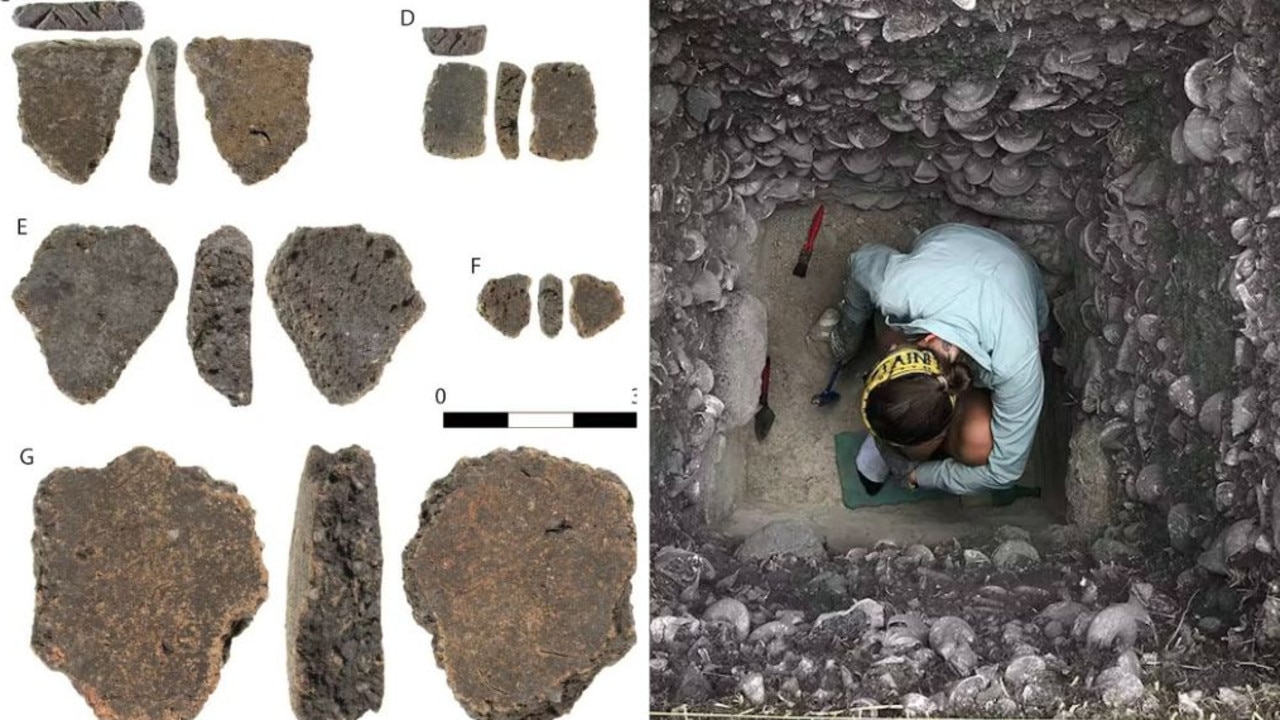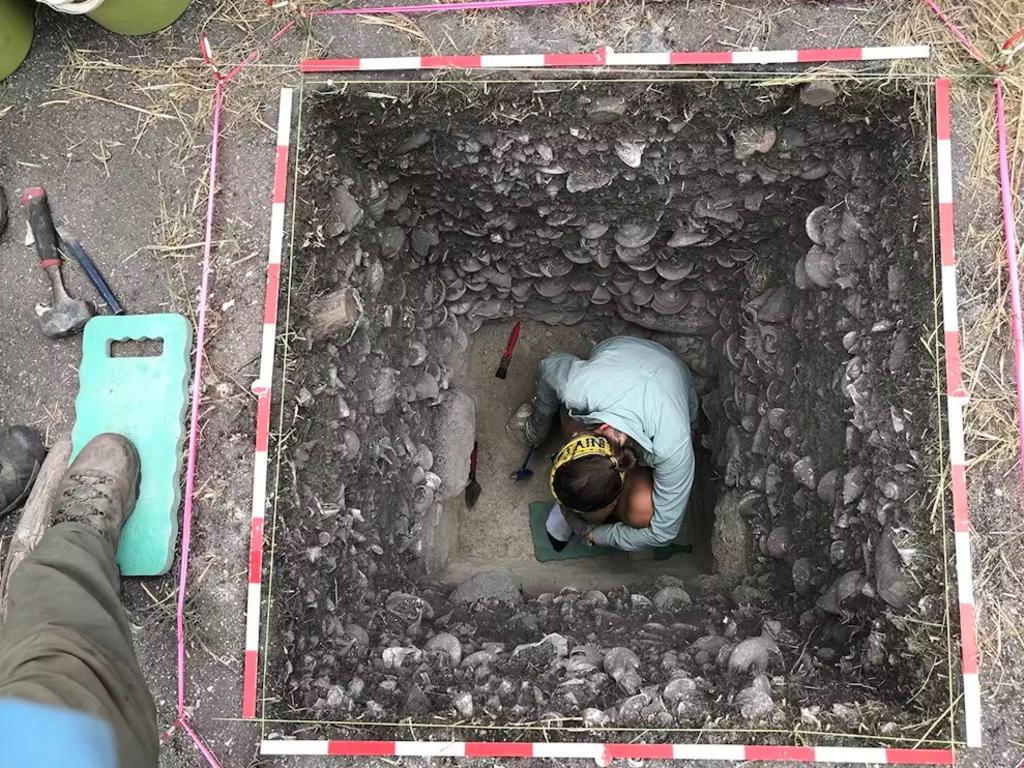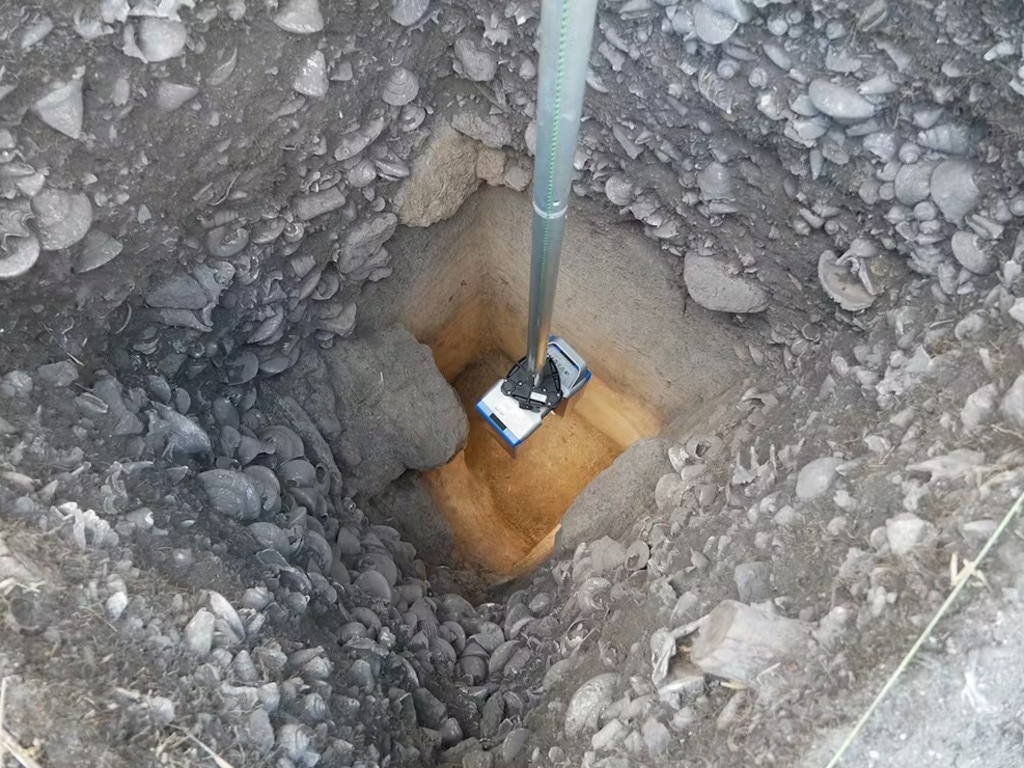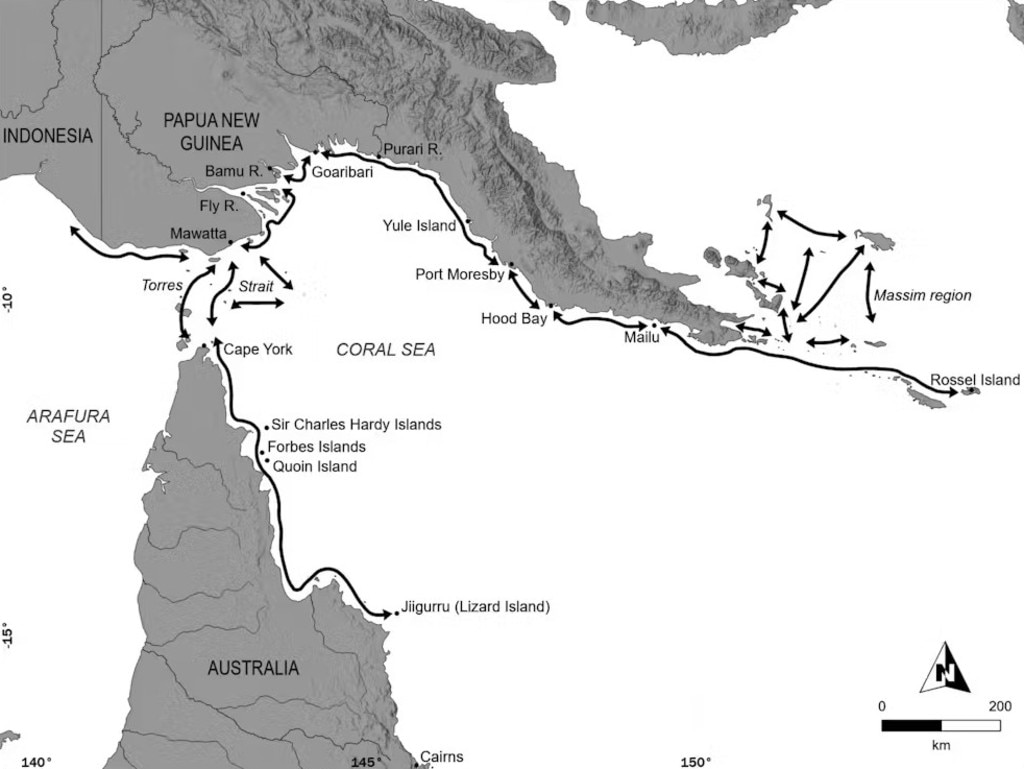Ancient pottery points to seafaring past of Indigenous Australians
A remarkable discovery of 2000-year-old pottery shows Indigenous Australians living in Cape York were both craftsmen and sophisticated seafarers, according to new research

READING LEVEL: GREEN
A recent discovery has shed new light on the role of pottery and sea travel in the history of our First Nations people.
The oldest known pieces of ceramic pottery in Australia have been found by a team of researchers, proving that First Nations people made and used pottery thousands of years ago.
The discovery has also given weight to the theory that First Nations communities living in Cape York used sophisticated boats and navigational skills to connect with other cultures in the Coral Sea Region.
The absence of ancient Indigenous pottery in Australia had long puzzled researchers, who had found plenty of ceramic fragments from southeast Asia, but nothing clearly made in Australia.

A team of researchers have since made a breakthrough discovery on Jiigurru (in the Lizard Island group) on the northern Great Barrier Reef about 600km south of Torres Strait.
ARC Centre of Excellence for Indigenous and Environmental Histories and Futures director Sean Ulm of James Cook University, Monash University Professor of Indigenous Archaeology Ian J. McNiven and Walmbaar Aboriginal Corporation director Kenneth McLean found fragments of locally made pottery two metres below the surface at a large shell midden dated to around 6,500 years ago.
Shell middens are (sometimes very large) piles of food remains like shells and bones, as well as charcoal from campfires, and other relics like stone tools.
The researchers said the reef shells found had been buried so quickly they still had colour on their surfaces.

“Archaeological sites of this depth and age are uncommon anywhere around the Australian coast,” the researchers said. “Radiocarbon dating of charcoal and shells found close to the pottery shows that it is between 2950 and 1815 years old, making it the earliest securely dated pottery ever found in Australia.”
Study of the clay showed it was most likely made in the local area of Jiigurru, they said.
The team also uncovered 82 pieces of pottery at a shallower depth of 40-80cm, including rim and neck pieces and fragments that had been “decorated with pigment and incised lines.”

WHAT DOES THE FINDING TELL US?
“The findings are clear evidence that Aboriginal people made and used pottery thousands of years ago,” the researchers said. The discovery has also helped to prove that First Nations people were in contact with other cultures from across the Coral Sea and were not geographically cut off from others, they added.

In order to learn about how to make pottery from other cultures, Indigenous Australians would have used “ancient maritime networks” to learn skills from other groups of people living in the Coral Sea region.
“The results also demonstrate that Aboriginal communities had sophisticated watercraft and navigational skills in using their Sea Country estates more than 6000 years ago,” the researchers said in their co-authored piece for The Conversation.
This story was originally published by The Conversation and has been edited for Kids News
POLL
GLOSSARY
- absence: something missing
- incised: decorated with cuts
- maritime networks: knowing other people from across the seas
- watercraft: boats
- estates: area belonging to families or communities
EXTRA READING
Australians may be 120,000 years old
Andy Griffiths’ Book Swap splash
Nine-year-old YouTuber dreams big
QUICK QUIZ
1. In what part of Australia were the pottery fragments found?
2. How old are they?
3. At what depth were they discovered?
4. What are two details noted by researchers about the appearance of the pottery pieces?
5. What does the finding demonstrate about the First Nations people of Cape York?
LISTEN TO THIS STORY
CLASSROOM ACTIVITIES
1. What was its use?
Jot down in dot points all that is known about the pottery fragments found at Jiigurru.
Based on what is known, and using your knowledge of how pottery items are used in modern times, explain what you think the pottery was used for and how you have come to this idea. Give specific details to support your hypothesis.
Sketch a picture of what you think an intact piece of this pottery could have looked like.
Time: allow 20 minutes to complete this activity
Curriculum Links: English; Science
2. Extension
Radiocarbon dating was used to estimate the age of the pottery fragments. Research to understand and then write a short summary to explain radiocarbon dating.
Time: allow 20 minutes to complete this activity
Curriculum Links: English; Science
VCOP ACTIVITY
Activity: Pottery detective
Objective:
– To engage children in creative writing and detective work inspired by the article about the discovery of ancient Indigenous pottery.
– To develop descriptive writing skills and encourage imagination.
– To chunk writing into smaller, more achievable sections.
– Suitable for children aged 7-10.
Instructions:
1. Introduction (2 minutes):
– Read the article about the discovery of ancient Indigenous pottery aloud.
– Discuss with the students what pottery is and why it’s important to understand the history of First Nations people in Australia.
– Discuss the importance of preserving and studying ancient artefacts like pottery to understand the history and culture of Indigenous peoples.
2. Become a Pottery Detective (5 minutes):
Explain to the students that they will imagine themselves as detectives investigating the discovery of ancient pottery.
Model an example planner for a short descriptive piece of text. Use a simple planning template that can include sketches or dot points.
Create a student planning template – Title, Introduction, Excavation, Discovery, Reflection/Conclusion
Example Detective Story for modelling:
Title: The Mystery of the Ancient Pottery
Introduction: As I stepped onto the sandy shores of Jiigurru, I felt a rush of excitement coursing through my veins. My team and I were on a mission to uncover the secrets hidden beneath the surface of this ancient land.
Excavation: With our shovels in hand and our eyes sharp, we began to dig. The sun beat down on us as we sifted through layers of sand and soil, searching for any sign of the past. Suddenly, a glint caught my eye — a shard of pottery peeking out from beneath the earth.
Discovery: As I gently brushed away the dirt, the pottery revealed itself in all its ancient glory. I could hardly contain my excitement as I realised the significance of our find. This pottery, buried for thousands of years, held the key to unlocking the mysteries of the past.
Reflection/Conclusion: Standing amid the remnants of history, I couldn’t help but wonder about the people who had crafted these delicate vessels so long ago. What stories did they tell? What traditions did they hold dear? As the sun dipped below the horizon, casting long shadows across the landscape, I knew that our discovery was just the beginning of an incredible journey through time.
– Provide each student with a piece of paper and a pencil or lapboard.
– Ask them to plan a short detective story or describe how they discovered the ancient pottery on their lapboards (template).
– Prompt students to pair up and discuss their planner with a partner and how they think of extending their ideas into a story. Ask them to develop a few openers to help begin their sentences and add these to the planner.
– Ask them to write a short detective story or describe how they discovered the ancient pottery.
– Encourage them to use descriptive language to set the scene, describe the excavation process, and imagine the thoughts and feelings of the archaeologists.
3. Share and Discuss (3 minutes):
– Invite a few students to share their detective stories with the class.
– Encourage them to read their stories aloud and explain their ideas.
– Discuss the different approaches and details included in each story, such as the setting, the characters involved, and any challenges faced during the investigation.
Extension (Optional):
– Encourage students to illustrate their detective stories with drawings of the excavation site, the pottery fragments, and the archaeologists at work.